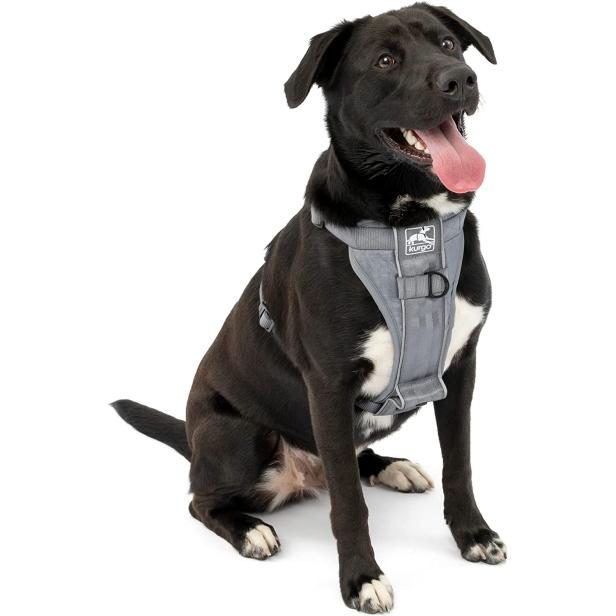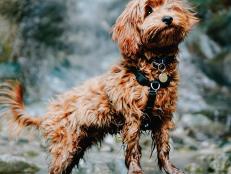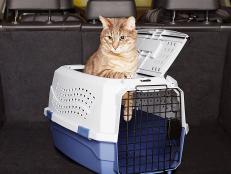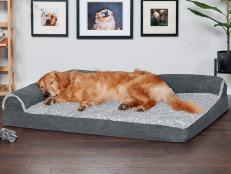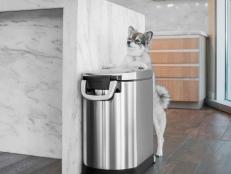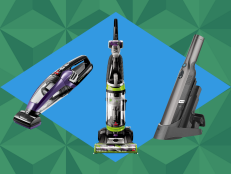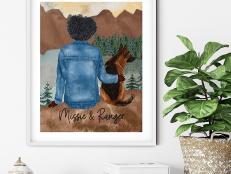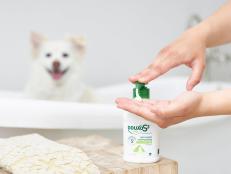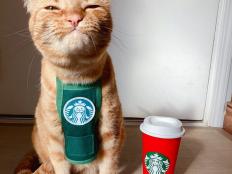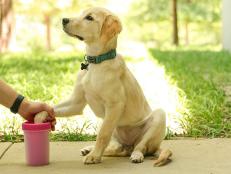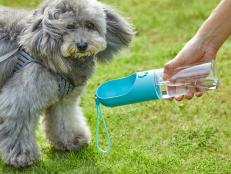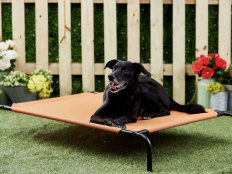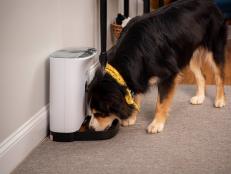The Best Dog Harness for Every Type of Dog in 2024
Outfit your pup in one of these top-rated, vet-approved and paw-parent beloved harnesses.

Our Top Dog Harness Picks:
- Best Dog Harness: Ruffwear Hi & Light Lightweight Dog Harness
- Best Harness for Small Breeds: Puppia Back Clip Harness
- Best Harness for Pulling: The Wonder Walker
- Best Harness for Fearful Dogs: Blue-9 Dog Harness
- Best Harness for Hiking: Ruffwear Flagline Dog Harness
- Best Harness for Road Trips: Kurgo Tru-Fit Quick Release & Seatbelt Tether Smart Dog Harness
Welcoming a new pup to your home means gearing up with so much stuff, from a supportive dog bed to healthy dog shampoo to a quality harness. A dog harness is one of the most critical items for training your dog and keeping your pup safe when leash walking. Collars alone just don't cut it, especially for smaller breeds. Whether you've got an energetic puller, a leash-reactive rescue or a puppy ready to train, we've outlined the best dog harness for each pup. Take a look at these vet, trainer and paw parent-approved harnesses, and see which one is best for your furbaby.
Why a Dog Harness Is Important
You can clip a leash to most dog collars, but a well-fitted harness is a lot healthier for your dog. "While collars are effective for teaching loose-leash walking (i.e. dogs can feel more tension through a collar than with a harness), they're not always the best option for everyday use," said Shannon Rau, dog trainer and owner of Martha's Garden dog daycare in Seattle. "Collars can put stress on dogs' tracheas and thyroid glands and even create additional pressure in the eyes. Increases in intra-ocular pressure can lead to glaucoma down the road," she said. Alternatively, Rau says harnesses will distribute pressure more evenly. "So for dogs who are early in their leash training journey or for whom pulling is a concern, an option with more coverage will keep pressure off of sensitive points," she said.
How to Tell if a Dog Harness Fits
How do you know what size dog harness to buy? Typically, dog harnesses are sold in sizes extra small to extra large with each size representing a range of inches for collar size and body width. Dr. Alex Schechter, founder of Burrwood Veterinary in Royal Oak, Michigan, says to make sure a harness comes with adjustable straps and a flat buckle. "The straps should be able to go around the chest or neck of your dog without being too tight or too loose so that it doesn't cause discomfort or harm your pet's neck or back muscles," he said.
But how tight is too tight? And how loose is too loose? "The rule of thumb on sizing collars and harnesses is that you should be able to insert two fingers between the harness and your dog's skin," said Rau.
What to Consider When Shopping for a Harness
The first thing to consider when shopping for a dog harness is the material. Schechter says to always choose a harness made of a comfortable material. "Opt for dog harnesses made from either nylon or leather," he said. "Nylon is lightweight, breathable, and easy to clean. Leather is durable and easy to keep clean."
Another important feature to consider is a front clip, back clip or a harness that offers two different leash pulls. "The big difference between the standard back clip and the 'no-pull' front clip is that with a front clip, the dog's balance is offset when they pull," said Rau. Front-pull harnesses are touted as a miracle cure for hyper dogs that love to pull, but Rau says there's a very important caveat. "Oftentimes, if a dog is not accustomed to this sensation, it is aversive enough to prevent pulling. Dogs will become accustomed to the front clip over time, so it's important to use this window to reinforce the behavior that you want to continue seeing. Harnesses don’t take the place of leash training, but they sure can give us an opportunity to show our dog what we want from them."
It's also important to consider what if any triggers your dog has with handling. Some dogs, especially rescues, are fearful of things going over their head so a slip-through harness wouldn't be a good choice. Instead, look for a harness with snaps all around.
For brands, Rau is a big fan of Seattle-made small business Wonder Walkers for a great light option. "However, Ruffwear offers some great durable options that provide additional coverage and padding," she added.
How to Get Your Dog Used to a Harness
With leash training, crate training and so many other training elements, it's important that your dog has a positive association with their new harness. "Just like humans, dogs glean a lot of information through association," said Rau. "If your dog is nervous about the outside world, they can quickly learn to connect this fear with their harness." Fortunately, there are training options. "A classic training technique could involve using a clicker to build a positive response to the harness — at the same time as your dog’s eyes connect with the harness, use a clicker to ‘mark’ (i.e. click and then reward). With repetition, this will create a positive emotional response to the harness, and this exercise can be built on by adding more direct contact with the harness. A less direct method might involve your dog wearing their harness around the house when they eat their meals, train and play!"
Best Dog Harness
Lightweight design but durable materials that will last, Ruffwear's Hi & Light Harness is a great everyday option. It features both a back clip and a front clip as well as reflective panels for nighttime strolls. The lining is made of a debris-resistant liner that magically sheds dirt and fur. Genius.
Best Harness for Small Breeds
For toy breeds and little pups, the Puppia Soft Dog Harness is beloved by tens of thousands of paw parents. What makes it so good? The triple mesh layers provide great ventilation, so no sweaty dog. And the airy fabric is super lightweight so your little pup won't be weighed down.
Best Harness for Pulling
There are front-pull harnesses, and then there's the Wonder Walker. This minimal harness has earned a cult following from paw parents and trainers alike for its ability to help train dogs not to pull when walking. It does feature a back clip, too, for hiking, jogging and when your pup learns not to pull.
Best Harness for Fearful Dogs
I love the simplicity of the Wonder Walker, and I love the durability of Ruffwear. But my dog is a rescue and has some handling triggers. Enter Blue-9. This harness clips on from every angle — collar and sides — so that nothing slips over the head. It has been a miracle for my pup. Now, it's not the most intuitive to put on and takes a minute to gear up, but it's created a fear-free process for my dog, which makes additional shaping and training on the leash a breeze. I can't say enough good things about this harness.
Best Harness for Hiking
For hiking, camping and other outdoor adventures, the Ruffwear Flagline Dog Harness is a solid option. At nearly $70, it's the most expensive harness on our list, but it's tough. Like the Hi & Light, this harness features Ruffwear's debris-resistant liner, but it also features secure padding and a sturdy handle that is clutch for traveling and adventuring with dogs with mobility issues.
Best Harness for Road Trips
As cute as it is to see a dog sniffing the wind with half its body hanging out a car window, it's not safe. Just like humans, dogs need to wear a seatbelt. While I love the seatbelt we have for our dog, it's a pain to toggle back and forth between harness and collar and seat belt on road trips, and wearing them all at the same time would just weigh him down. The Kurgo Tru-Fit Smart Harness, however, comes with its own seatbelt tether, instantly turning your dog's harness into its seatbelt. It's also under $20 so we could also say this is the best budget dog harness, too.

.-Battle-on-the-Beach-courtesy-of-HGTV.-.jpg.rend.hgtvcom.196.196.suffix/1714761529029.jpeg)









